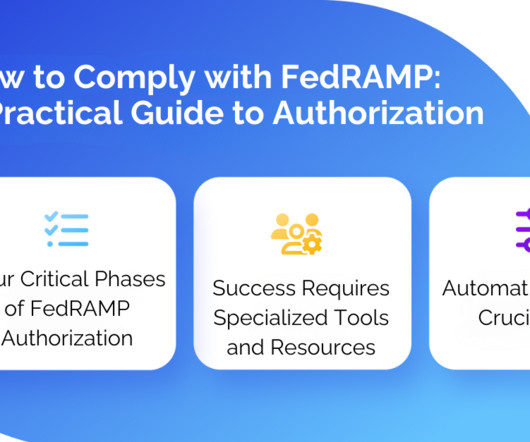How to Comply with FedRAMP: A Practical Guide to Authorization
Reciprocity
DECEMBER 17, 2024
Understanding the Authorization Process The path to FedRAMP authorization involves four key phases: Preparation and planning Security implementation Assessment and authorization Continuous monitoring Let’s explore each phase in detail.


















Let's personalize your content